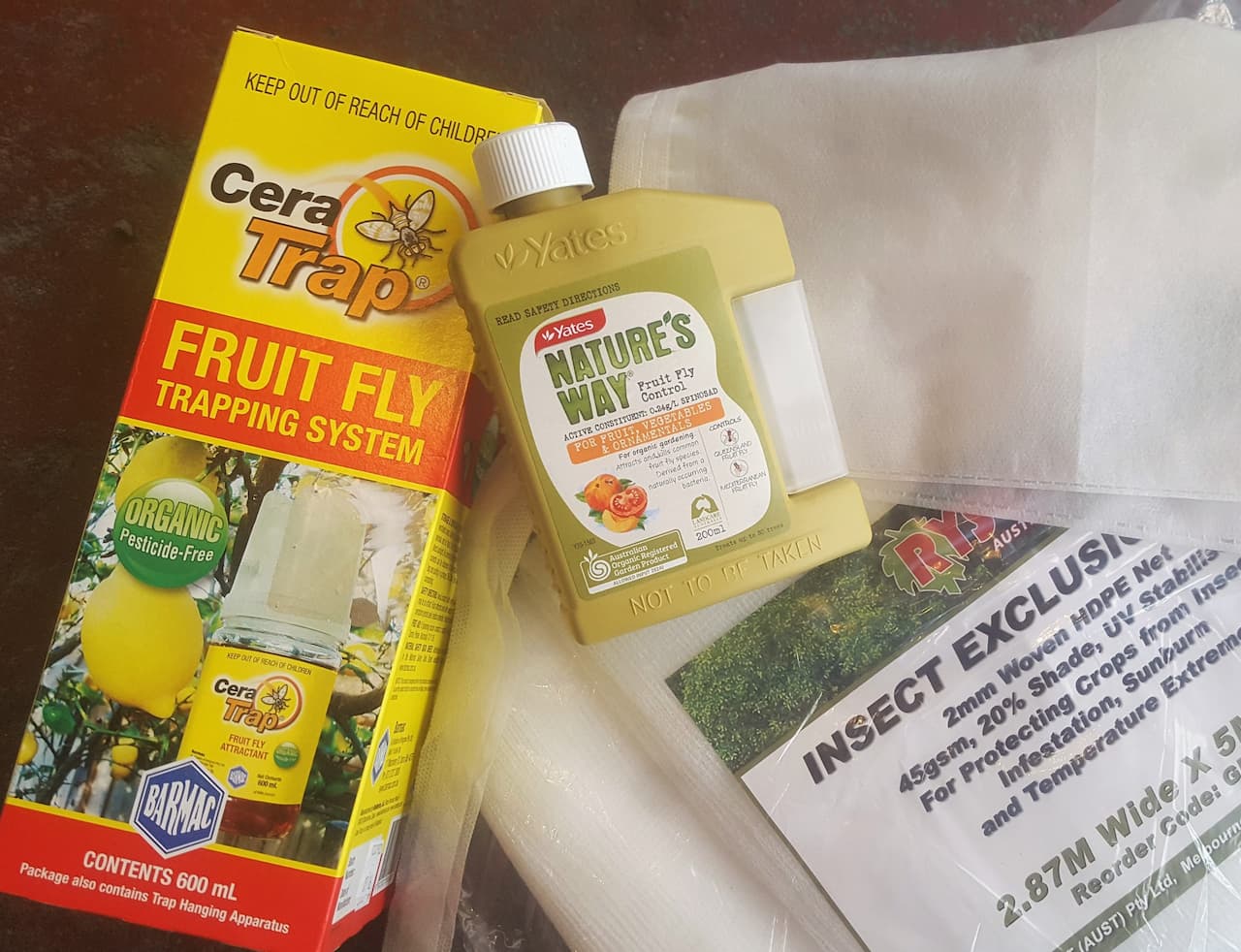Your cart is currently empty!

How to Control Fruit Fly in Perth
Mediterranean Fruit Fly (Ceratitis captiata commonly known as Medfly) is a serious horticultural pest affecting home gardens in the south west of WA. It attacks a range of fruit and fruiting vegetables.

Understanding its life cycle is the key to controlling Medfly. After mating, the adult female will seek a high protein meal, then search for a suitable host in which to lay her eggs. She prefers soft fleshed fruit such as apricots and plums (although they will also infest less preferred hosts such as olives if nothing else is available). The female uses her ovipositor to pierce the fruit skin and lay batches of up to 300 eggs within the flesh. The eggs take just 2-4 days to hatch in warmer months. After hatching, the larvae grow quickly and feed on the flesh of the fruit, causing it to decompose. When fully grown, the larvae fall from the tree and burrow into the soil where they complete the pupal stage, re-emerging as adults. The entire cycle takes up to 34 days in summer and 115 in winter.
Under the Plant Diseases Act, the control of fruit fly is compulsory. A multi-pronged approach is the most effective.

Hygiene
Dispose of infested or unwanted fruit and clear fallen fruit from the ground. Dispose of by feeding to poultry, wrapping in plastic and leaving in the sun for a few days, or boiling. Do not bury or place in general rubbish as this will not kill any larvae within the flesh.
Baiting
Should be commenced as fruit starts to form and continued until harvesting is finished. Yate’s Fruit Fly Control works by exploiting the female’s need for protein to mature her eggs. Applying coarse droplets of protein laced with insecticide to the foliage and trunks of trees attracts adult medfly, who ingest a lethal dose of Spinosad, an insecticide derived from naturally occurring soil bacteria, and prevents the Medfly from mating or reaching the egg laying stage.
Trapping
Also exploits the Medfly’s need for dietary protein. By hanging traps containing a protein and sugar-based liquid within the tree, male and female medfly are attracted into the trap and drown. Ceratrap is currently the only lure and kill device registered in Australia.
Exclusion netting
Protecting clusters of fruit or whole trees can be achieved by physically preventing the females from reaching the fruit. Exclusion products come in a range of forms including bags, sleeves and whole tree nets. Netting should only be applied while the fruit is forming and removed after harvest to prevent damaging both the tree and netting.
There is no magic potion to rid our gardens of Medfly, but breaking the life cycle and controlling population numbers through a combination of methods will help everybody enjoy their hard-earned harvest.
Check out our range of solutions for Fruit Fly control. Shop Pest Solutions
This is intended as general information only. Please ask one of our horticulturist for more specific advice for your garden situation.
Recomended Further Reading

How to Treat Peach Leaf Curl
Read More: How to Treat Peach Leaf CurlIn Autumn stone fruit trees such as peaches, nectarines, apricots start to lose their leaves. This is the time to spray for Peach Leaf Curl. If left untreated, this disease…

Dwarf Fruit Trees for Perth gardens
Read More: Dwarf Fruit Trees for Perth gardensLearn how to grow dwarf fruit trees in your Perth garden, including plums, nectarines, peaches, apricots, lemons and apples.



